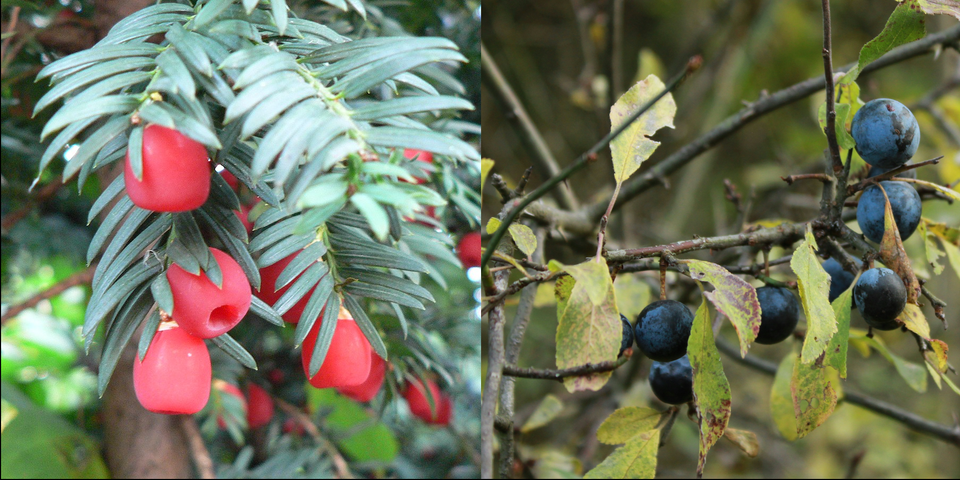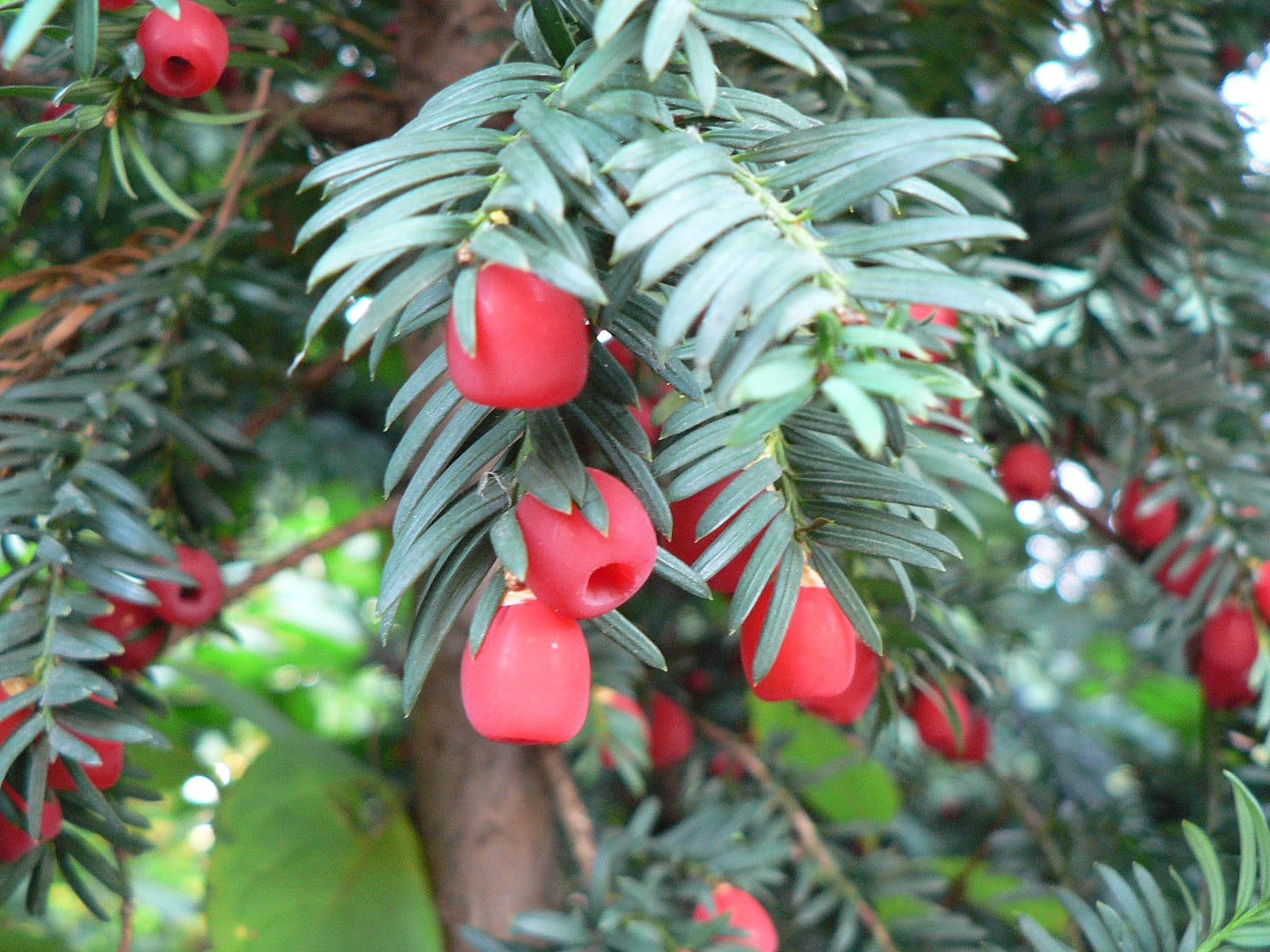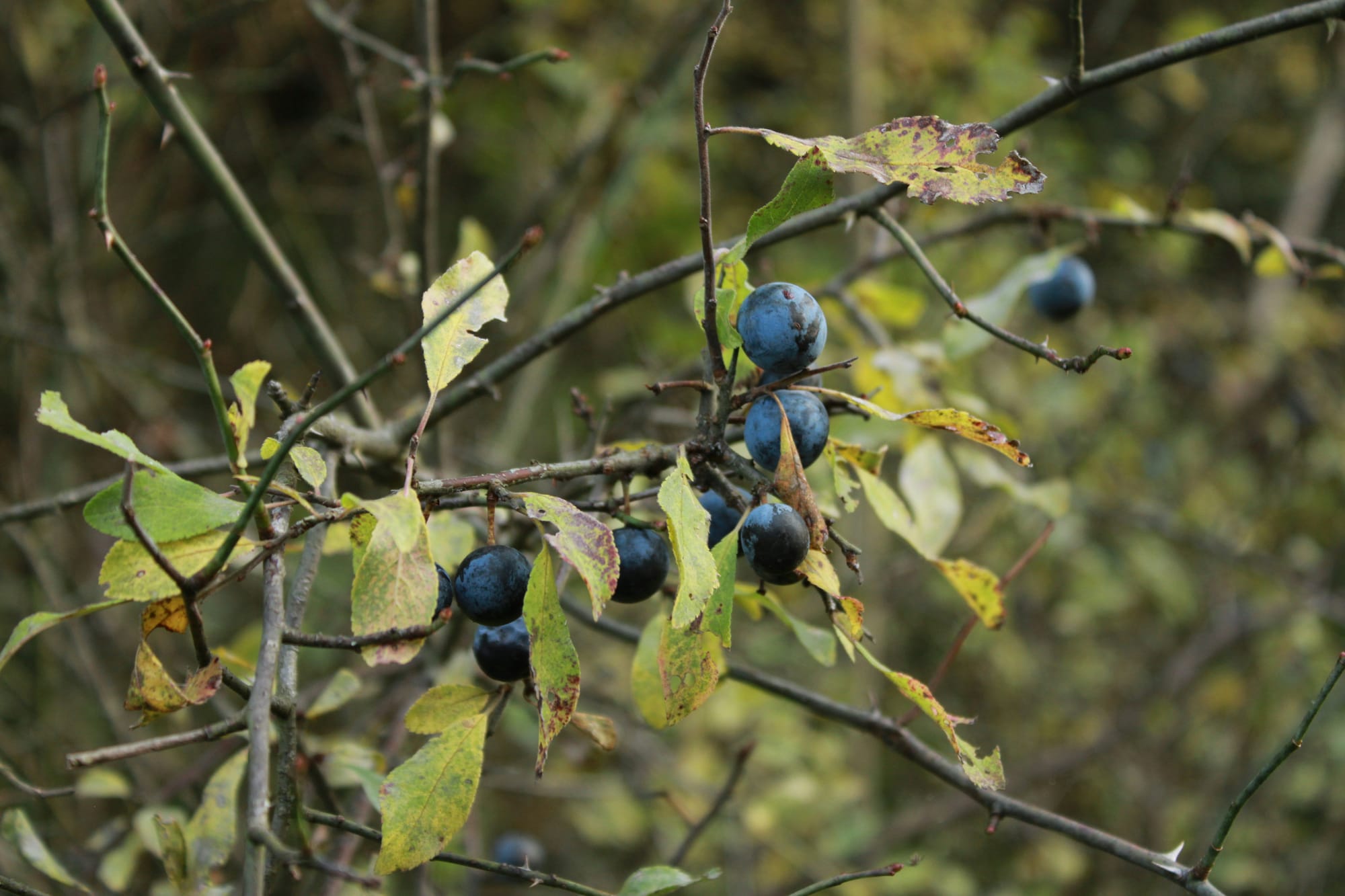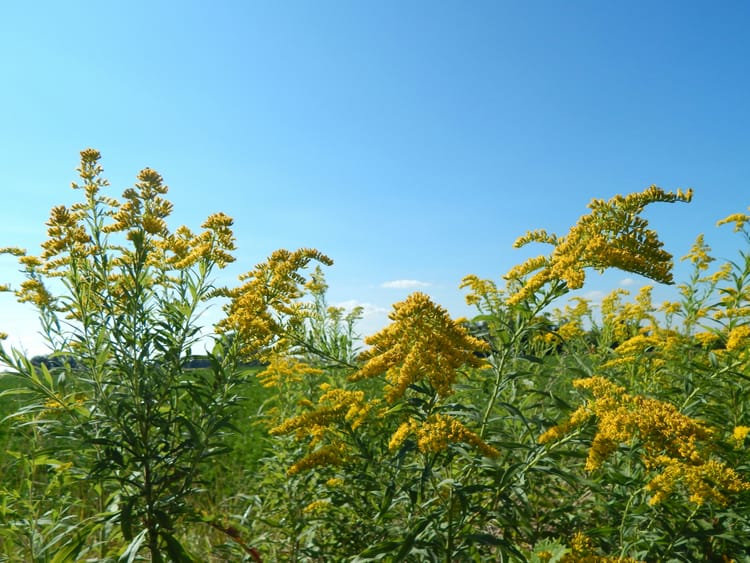Solar Winter + First Quarter: Yew, blackthorn

Hello. It's Friday, and of course it's Halloween, which as some of you may recall I treat as simultaneously the same day as Calan Gaeaf (Samhain) and also a slightly different one. Because of the timing of this post right on/around a holiday, and because of how many other things I've had to do again this week, this won't be as long of a holiday post as some can be, but conveniently I had planned to send out an installment of my sporadic tree lore series today — and that usually makes for a smaller, cozier post regardless.
Of course "cozy" is not necessarily a word I would use to describe the trees I will meditate upon for this season. One is quite toxic and the other has dangerous or negative associations in folklore. But every tree has its time to be revered. And while the first tree is not one that I have the privilege of seeing very often, and while I do not live on land where the second tree natively grows — only in rather small pockets as an introduced species — both trees would have had a rich cultural context for my ancestors, perhaps for those in Cymru most of all, and in this time of the thin veil with the ancestors stepping through I cannot help but sense those figures bearing branches of yew and blackthorn in their hands.

Yew
More than any other tree I can think of, this is the death-tree.
While most other conifers in this world are not particularly poisonous for humans, yews — which number about a dozen species that form the genus Taxus — contain eponymous taxine alkaloids in nearly every part of themselves. These alkaloids can cause cardiovascular or respiratory failure if consumed in significant quantities, and they can at least cause very serious illness at smaller doses. And even if taxine toxicity is not quite as inherently lethal as something like aconitine[1], yew presents a complex hazard insofar as how the alkaloids can be absorbed not only through ingestion and skin contact but even as airborne pollen shed by the tree's male cones. Likewise, the fruits that develop in late autumn from those cones, sometimes called berries but technically considered arils, are a bright red, appealing-looking treat that lure in uneducated backyard foragers, especially children. As it happens, the flesh of the arils is the one part of a yew that's "safe" to eat, but only if the inner seed is removed, for the seed still contains quite a bit of taxine; and most people who go eating yew arils do not know about this problem.
From what I can tell, most cultures that have arisen where yew grows have been aware of the risks since before written history. While various trees often become candidates for belonging to some Other- or Underworld, e.g. the apple, the pomegranate, the hawthorn, or as we shall get to the blackthorn, their genuinely edible fruits and safely touchable wood allow for less of a taboo around the place those trees can occupy. By contrast, at least in the cases I'm familiar with, yew has carried stricter protocols and darker functions.
In Europe, traditionally the yew is a major feature of graveyards, and because yews can live an astonishing 600 to multiple thousands of years old, it is self-evident that such graveyards would often have been created where yews already grew. By fencing off the yew among the dead, this would naturally discourage children and adults from engaging with these trees on a regular basis. Conversely, some younger yews might have been planted intentionally in these sequestered locations, which could reflect a growing, habituated sense that yews are a necessary cemetery feature.
It's also possible that growing yews in a protected manner has been a deliberate decision for other reasons. For yew has long one had clear use besides as a poison for others or oneself[2], and this is the tree's superb wood: a softwood like that of any conifer, but very hard for its type, offering elasticity and durability. Yet this, too, has kept yew historically associated with death through weaponry; while people have turned the wood into furniture, musical instruments, or more benign tool handles, its most iconic use has appeared in war as the tactically devastating English longbow (and other longbows before it). And meanwhile, working yew wood typically requires precautions for the taxine; I have seen recommendations for gloves and respirator masks or for at least washing up thoroughly and working in a well-ventilated space, and I have read stories from people who weren't so careful and did develop mild to moderate poisoning symptoms.
Be that as it may, I say again that the tree has its place. For besides a yew's ecological value as a long-lived source of nutrients and habitat for other species, there is a place in the world for weapons, and graves need their guardians. Even taxine itself can have medicinal use like many poisons do; paclitaxel, isolated from Pacific yews, is a potent chemotherapy drug. This of course does not mean people with cancer should just go and eat yew, but rather it's an example of how with the right techniques we can derive from life from seemingly deathly places.
And so the yew is feared, but equally the yew is sacred.

Blackthorn
Blackthorn, too, can be used for weapons of a kind. The best known may be the traditional Irish shillelagh, which has served as a fighting stick as much as a walking stick. But living where I do, I heard of a shillelagh a long time before I heard of blackthorn. We do not have blackthorn here except where fellow settlers have rarely decided to plant it, and it doesn't seem to have become particularly endemic.
I would really like to see a blackthorn tree sometime, however. While not that closely related to hawthorn apart from each tree belonging to the rose family, over the years I've been struck by the impression that blackthorn has culturally occupied a position somewhat like hawthorn's goth cousin, right down to the name — hawthorn is sometimes known as whitethorn. Why white, I'm not sure, as both trees' flowers are white. But for blackthorn itself, the fruits are very dark, a similar color to blueberries but more closely resembling a cherry in structure (as they're really a drupe) and tasting quite different from either.[3] I've seen descriptions of a plum-like but very tart flavor that requires a frost or two to become sweeter.
And that is what aligns blackthorn with this season. In its native range the fruits are often collected around the start of November because of when the frosts come. It then traditionally blooms as early as February 1st, linking it also with Gŵyl Fair in my practices, but either way the blackthorn is clearly comfortable in the dark half of the year — cold-hardy and somber. A "blackthorn winter" is considered an inhospitable one for humans.
The lore of blackthorn runs accordingly. The Cailleach herself carries a blackthorn staff, and in Celtic or general British traditions a stick or wand of blackthorn would be associated with performing baneful magic like curses. The tree, often low-growing, may easily form the stuff of many fairy tales involving thorn bushes, since blackthorn may not bear thorns like roses or brambles but still forms sharp, thorn-like shapes with new twig growth and also forms impenetrably dense thickets.
Like the resilient and slow-growing yew, blackthorn thus makes for a natural hedgerow, and fittingly both trees occupy a central place in the hedgecraft of Euro-traditional knowledge systems. As I invoke my ancestors tonight, I invoke the spirits of those trees as well, even as I bow to the spirits and custodians of this landscape where I remain a fumbling, ever-learning interloper.
[1] The primary toxic compound in wolfsbane, another well-known deadly poison of the ancients.
[2] Various Roman histories describe suicide through yew consumption, and it can only be assumed that a skillful poisoner would (and still might) keep yew in their supplies.
[3] Often the fruits are called sloe berries, and in turn the tree is also known as sloe, e.g. for sloe gin, which is gin infused with this fruit.
Thank you for reading, and since I know many of you will be observing this holiday regardless of your exact ritual focuses, I wish you a good Calan Gaeaf, Samhain, or Halloween respectively. The assembly of souls is upon us.
Next week I anticipate being obscenely overworked, but with any luck come Friday I will still be able to send out some brief thoughts on my interest in sigil work. After that, I'll be circling back to my zodiac series with a piece on the significance of Scorpio and Pluto to people in my generation.





Member discussion